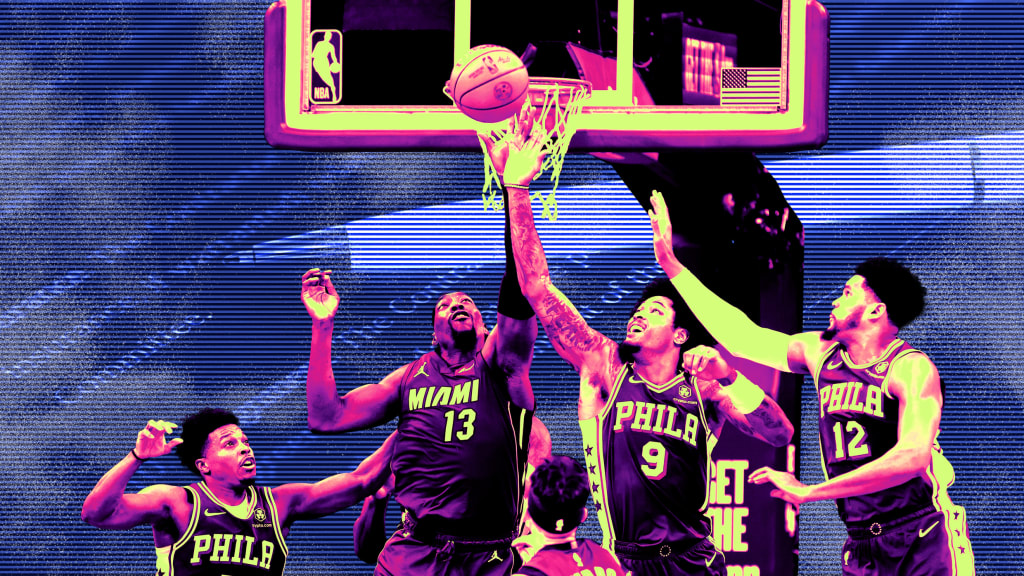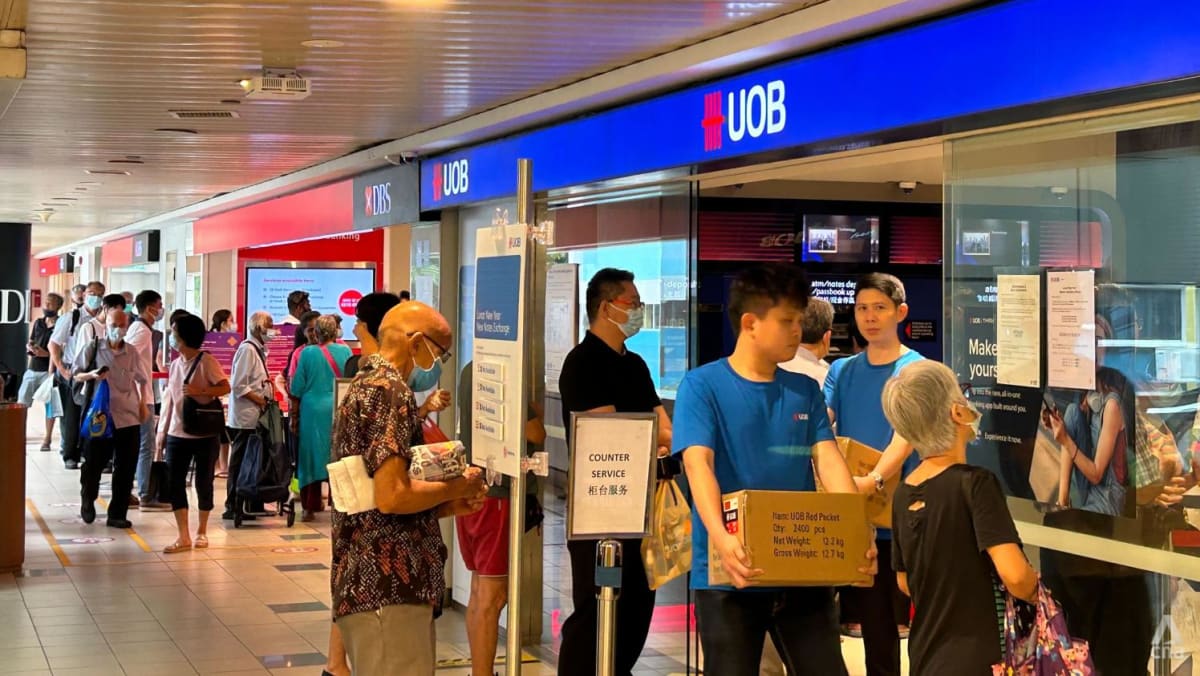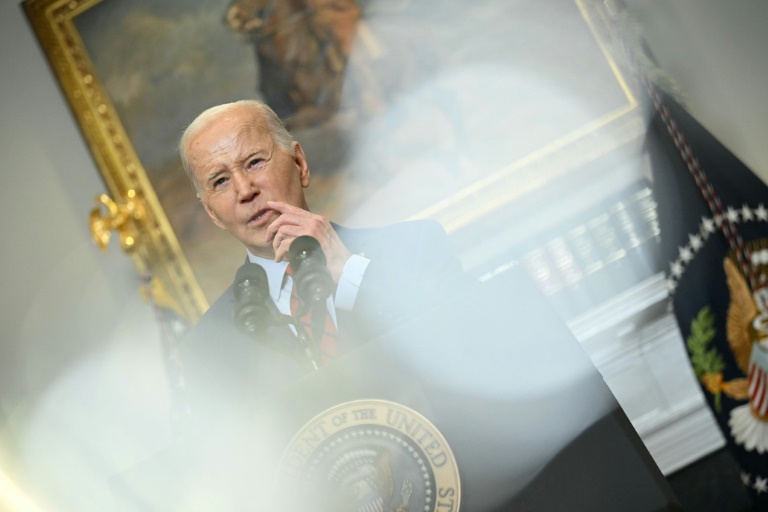As the NBA playoffs get underway, each team’s success hinges on the health of its superstars—and the quality of the short-term gig workers bolstering the roster.
Take the recent play-in game between the Philadelphia 76ers and the Miami Heat. There was a moment during the third quarter that swung the entire game the Sixers’ way. With the Heat holding a comfortable lead, their lightning-fast guard Tyler Herro took the ball up the court, hesitating as the Sixers’ Kyle Lowry met him at the top of the key, before opting to attempt to blow by his older, slower defender and drive to the rim.
Lowry, the 38-year-old, six-time All-Star, didn’t even try to keep up, instead momentarily allowing his attacker to believe he’d beaten him before whipping his arm around Herro’s back and poking the ball to a waiting Joel Embiid, who whipped it back to the wily veteran—who by that point had seemingly teleported to the other end of the court. As the sequence ended in an easy transition bucket from the Sixers’ Tobias Harris, the entire momentum of the game shifted, spurring a Philadelphia comeback that ultimately resulted in a one-point victory.
Lowry will most likely prove to be a key player in Philly’s first-round playoff matchup against the New York Knicks as well. But he didn’t start the season with the Sixers—in fact, they were technically his third team of the year.
High-Profile Permalancers
These days, NBA rosters often function as modern firms in miniature, with a set of full-time core employees whose work is supported by freelancers, permalancers, and contractors. A player like Lowry can be looked at as a highly skilled consultant, brought on to a project to help maximize output in the short term. Undoubtedly his savvy and veteran leadership could swing a playoff series, but he’s not someone you’re building the team around—at 38, he may very well choose to retire at the end of the season.
Yet throughout the league, more and more NBA teams have begun to rely more heavily upon players like Lowry, contingent workers performing the duties that were once carried out by full-timers. Has the balance been thrown out of whack?
Of course, this NBA gig work is lucrative: The league minimum salary is a sliding scale that ranges from a little over $1 million for a rookie to $3.2 million for a 10-year veteran. Other rates apply to players splitting time between the franchise and its G-League affiliate on two-way contracts ($559,000-ish per year) or players on 10-day contracts (ranging from $64,343 to $183,704 depending on experience). While even the lowest 10-day contract pays more than many of us working stiffs make in a single year, this income is peanuts within the context of the NBA, where the average annual salary is nearly $10 million.
This plug-and-play strategy sometimes leads to chaos.
Take the Memphis Grizzlies. Between a conduct-related suspension and a season-ending shoulder injury, superstar point guard Ja Morant was able to play only 9 (of the total regular-season 82) games this season, while other core players such as guards Marcus Smart and Desmond Bane missed significant playing time as well.
As injuries ravaged the team to an almost comical degree throughout the season, the Grizzlies ended up employing an NBA record 32 different players to fill out its 18-man roster, which consists of 15 fully contracted players and three players on two-way deals. They signed players to 17 different 10-day contracts this year; only those of Trey Jemison and Jordan Goodwin were converted to two-way contracts, which at the very least offered them job security until early April.
What happened to the rest of the players? Some, like the former Princeton standout Tosan Evbuomwan, found roster spots elsewhere. Others, like Wenyen Gabriel, are out of the league (he’s now playing in Puerto Rico). And while it’s great that so many NBA hopefuls have gained experience, they didn’t earn nearly what they could have if they’d been signed to a proper contract.
In short, these weren’t NBA deals. They were NBA internships.
The Hope Labor Market
“It clearly works for the franchises,” says Ryan King-White, a sports management professor at Towson University who studies labor in the sports industry. “These [10-day and two-way] contracts essentially save them money, and if they get lucky and a player turns out to be amazing, that’s even better for them, because it means [the franchises] can keep their wages lower for a little bit longer.”
Meanwhile, players readily take whatever deal is offered to them in part because of high-profile successes such as the Grizzlies’ GG Jackson, a 19-year-old two-way player who became one of the focal points of the team’s offense over the winter and was eventually signed to a four-year deal; and Gabe Vincent, who the Miami Heat had plucked from obscurity only to see him become a key player on its 2023 run to the NBA Finals (he now makes $11 million per season playing for the Los Angeles Lakers).
Players, King-White says, think “I’m gonna give this a shot because I want to play in the best league in the world, so I’m gonna take this short-term hit,” adding, “What gets left out is that most of those short-term hits don’t turn into anything other than just another small contract. You’re playing in Milwaukee for 10 days and then Utah for the next 10 days, just kind of hopping around and never realizing that potential you may have.” King-White refers to this phenomenon as “hope labor.”
“There are all these young people who are super interested in this thing, whatever it is, and they’re willing to do whatever it takes to get their foot in the door, even to their own detriment,” he says. “There are so many people willing to do this stuff for little to no pay just to be around the arts or sports.”
It’s entirely possible that the system as it exists does a disservice to both players and teams. It’s hard for a team to build chemistry and cohesion if they’re simply cycling through one guy after another, and it’s even harder for those guys to feel comfortable enough to experiment and develop new skills if they don’t know where they’ll be playing in two weeks. (If you had the misfortune of being a Grizzlies fan this season, you’re well aware that the on-court product suffered as a result. How many potential GG Jacksons did the team lose out on by cutting them loose too soon?)
Sometimes, maximizing human input at a business means keeping those humans around long enough to see what they have to offer, investing in them, and watching them thrive for you.







